Cooling system and backplate
This rather simple cooling system relies on a large lamella heatsink and a separate VRM heatsink, which must be cooled by the air flow. Of course, the generated waste heat is directly related to the recorded power, for which the cooling solution is responsible for optimum dissipation.
This smaller cooler made of strandaluminium is certainly not the ideal solution, but is due to the price and is still sufficient. The backplate also shows us why this is the case.

KFA2 has also coated the backplate in black on the inside, so that the radiated heat is better absorbed and a heat build-up is counteracted. Above the VRM, we see a simple rib-plated heatsink made of aluminium strand profile, which is not blown directly by the fans, but is integrated into the horizontal airflow concept via cover on the large slat cooler of the GPU.
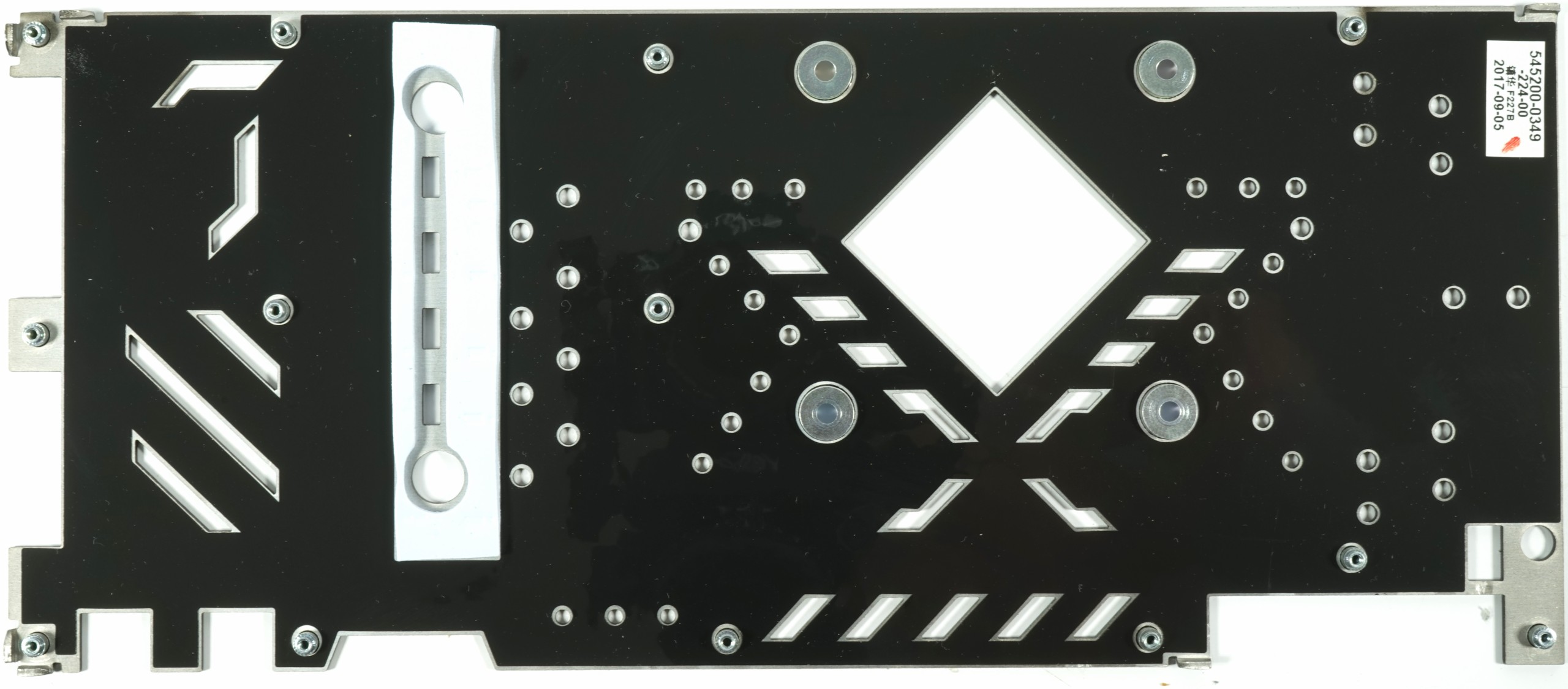
| Cooling system at a glance | |
|---|---|
| Type of cooler: | Air |
| Heatsink: | Copper heat sink for the GPU Memory cooling (modules, voltage converters) via mounting frame on the heat sink |
| Cooling fins: | Aluminum, horizontal alignment related |
| Heatpipes | 2x 8 mm and 2x 6 mm, copper composite, nickel-plated |
| VRM cooling: | GPU and memory VRM via a separate VRM cooler |
| RAM cooling | via mounting frame and indirectly via the heatsink |
| Fan: | 2x 9.2 cm fan modules 10 rotor blades each semi-passive regulation |
| Backplate | Aluminum Cooling function, inside foiled with cutouts for pad |
Now let’s take a closer look at this cooler. In addition to the simple copper heat sink for the GPU, two central 8 mm heatpipes and two external 6 mm heatpipes made of nickel-plated composite material are designed to transport waste heat from the GPU to the individual areas of the slat cooler. Responsible.
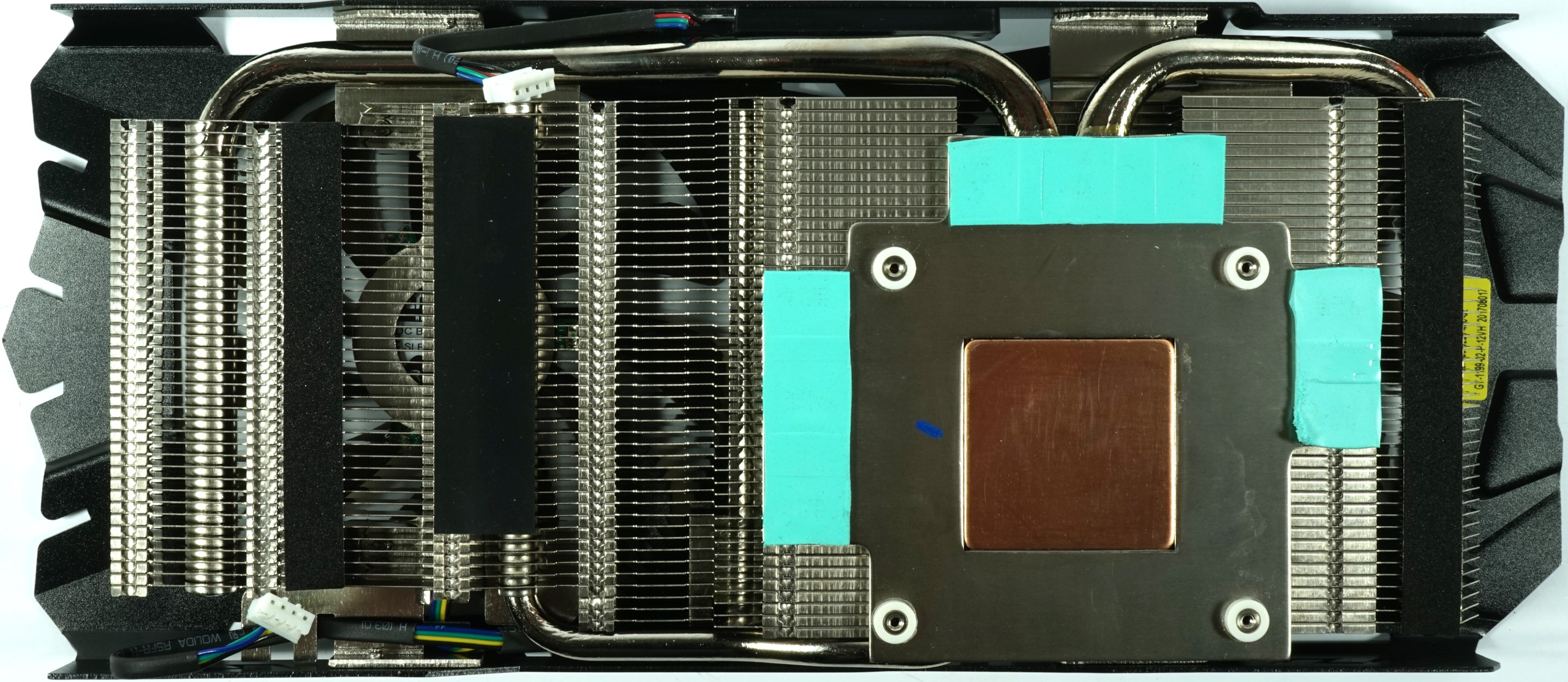
We also see that a rubber strip has been glued above the separate VRM cooler, which serves only as a kind of Airshield. We have maintained this concept, but have improved the cooling performance ourselves somewhat. For this purpose, after the official measurements, we simply removed the rubber strip and replaced it with an ultra-soft, two millimeter thick thermal pad in the appropriate size, which we placed primarily over the range of the five GPU phases. This brings up to 2° less operating temperature in the VRM range.
Fan curves and noise emission (“volume”)
The fan curves show that KFA2/Galax also has to compensate for the lower radiator surface and thus the very good weight with slightly higher fan speeds. material costs, the required power for the fans and the associated noise (he) carries the customer. But it reads worse than it sounds in reality.
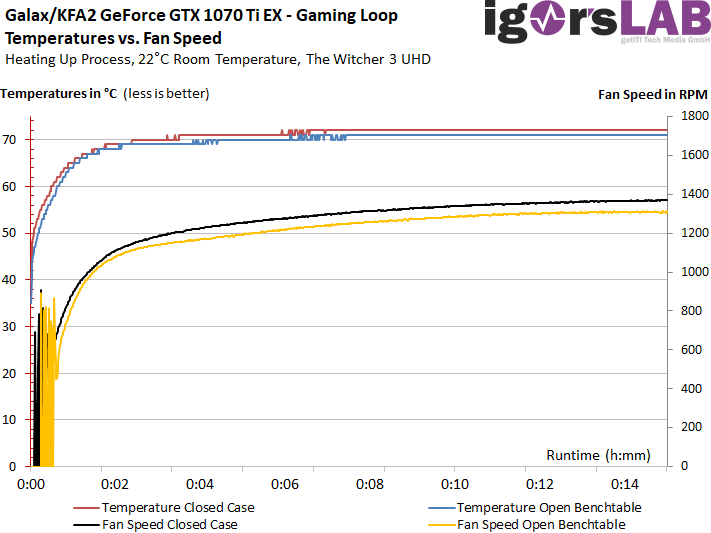
The whole thing doesn’t look much different with the stress test. In summary, the card with the three smaller fans can be acoustically not a silent wallflower. But it is still going reasonably well at the back, as we will see in a while.
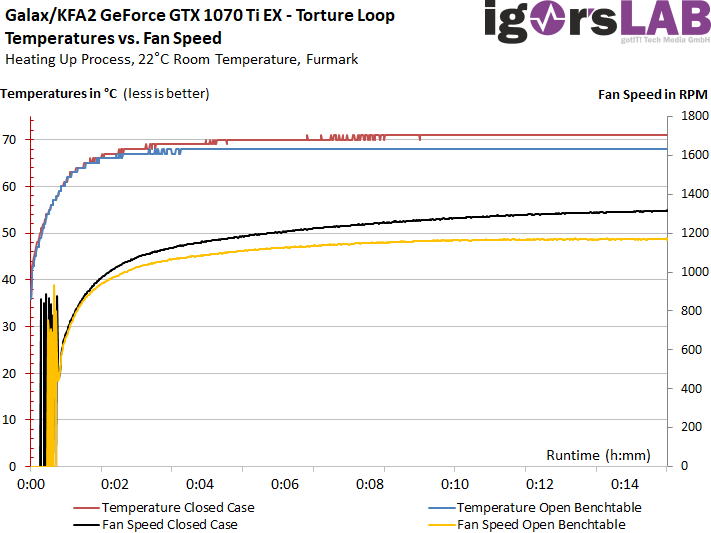
The card hardly has any reserves to rotate the fans lower. It would certainly work, but then it cost at least one boost step.
| Measurements for fans and noise emission |
|
|---|---|
| Fan speeds Open Benchtable Maximum |
1314 rpm |
| Fan speeds Open Benchtable Average |
1309 rpm |
| Fan Speeds Closed Case Maximum | 1382 rpm |
| Fan Speeds Closed Case Average | 1378 rpm |
| Noise emission (air) Maximum |
38.4 dB(A) |
| Noise Emission (Air) Average |
37.9 dB(A) |
| Noise Emission (Air) Idle | 0 dB(A) |
| Sound characteristic / Hearing impression |
hardly lower frequency bearing noises audible engine noise< 1 Hz moderate air/demolition noise audible voltage transformer noises |
To illustrate our subjective audio impression once again, we now have a high-resolution graphic with the complete frequency spectrum of our laboratory measurement:
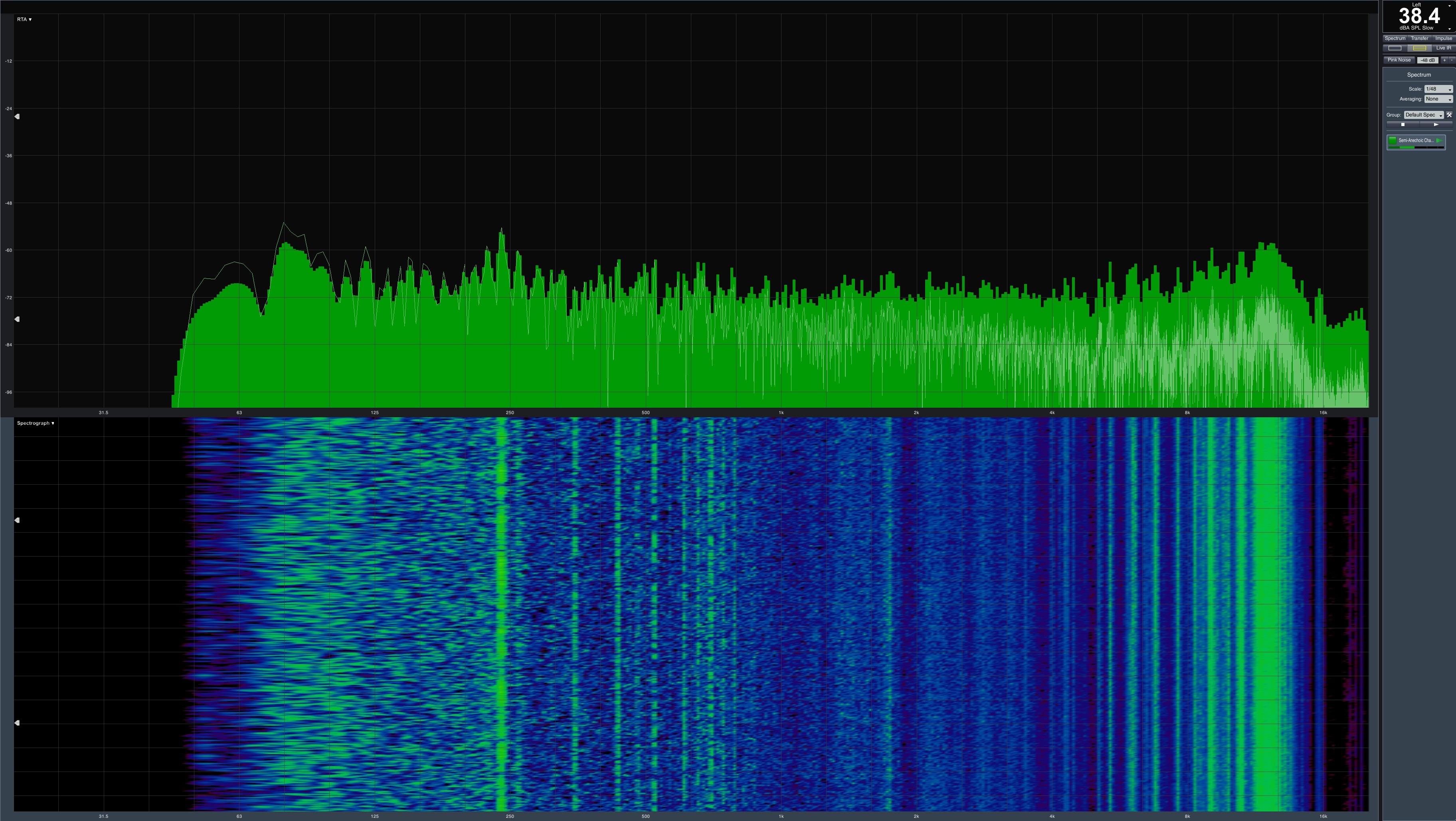
The 38.4 dB(A) is good and more than acceptable for such a light map and the measured temperatures. Cost-down can therefore also work well here, if you can make slight reductions in the operating noise. However, it is by no means noisy.


































Kommentieren